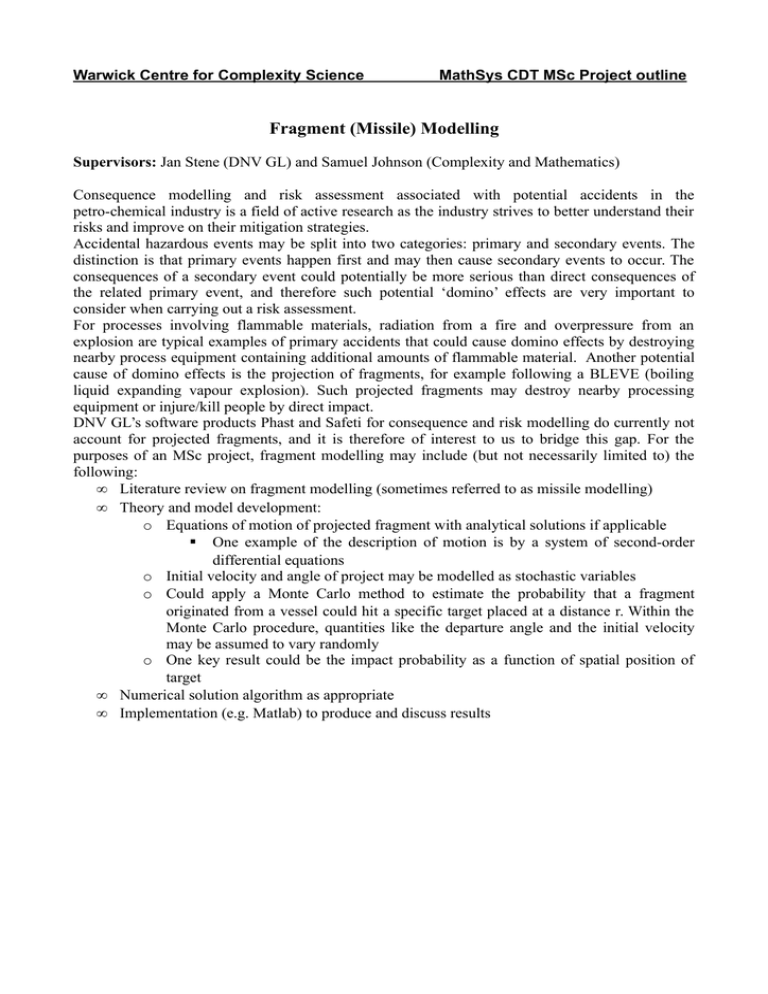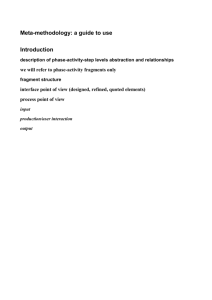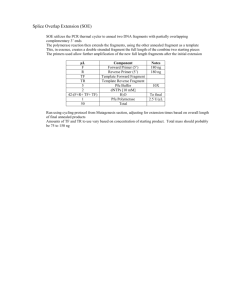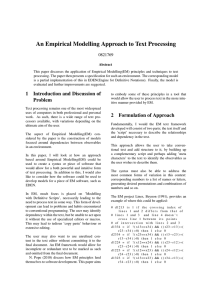Fragment (Missile) Modelling
advertisement

Warwick Centre for Complexity Science MathSys CDT MSc Project outline Fragment (Missile) Modelling Supervisors: Jan Stene (DNV GL) and Samuel Johnson (Complexity and Mathematics) Consequence modelling and risk assessment associated with potential accidents in the petro-chemical industry is a field of active research as the industry strives to better understand their risks and improve on their mitigation strategies. Accidental hazardous events may be split into two categories: primary and secondary events. The distinction is that primary events happen first and may then cause secondary events to occur. The consequences of a secondary event could potentially be more serious than direct consequences of the related primary event, and therefore such potential ‘domino’ effects are very important to consider when carrying out a risk assessment. For processes involving flammable materials, radiation from a fire and overpressure from an explosion are typical examples of primary accidents that could cause domino effects by destroying nearby process equipment containing additional amounts of flammable material. Another potential cause of domino effects is the projection of fragments, for example following a BLEVE (boiling liquid expanding vapour explosion). Such projected fragments may destroy nearby processing equipment or injure/kill people by direct impact. DNV GL’s software products Phast and Safeti for consequence and risk modelling do currently not account for projected fragments, and it is therefore of interest to us to bridge this gap. For the purposes of an MSc project, fragment modelling may include (but not necessarily limited to) the following: • Literature review on fragment modelling (sometimes referred to as missile modelling) • Theory and model development: o Equations of motion of projected fragment with analytical solutions if applicable One example of the description of motion is by a system of second-order differential equations o Initial velocity and angle of project may be modelled as stochastic variables o Could apply a Monte Carlo method to estimate the probability that a fragment originated from a vessel could hit a specific target placed at a distance r. Within the Monte Carlo procedure, quantities like the departure angle and the initial velocity may be assumed to vary randomly o One key result could be the impact probability as a function of spatial position of target • Numerical solution algorithm as appropriate • Implementation (e.g. Matlab) to produce and discuss results






